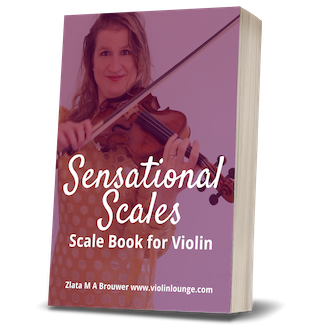Technique vs Musicality: Which One is Learnable?
We often think that technique is just a trick you learn, while musicality is the artistry that can’t be taught
I think it’s exactly the other way around
Playing technique is sometimes looked down upon
As musicians should be artists and not mechanics, we like to focus on expression and musicality. Which is good, because this should be the end goal and too many players get lost in the technique. However, the technique sets you free: it gives you the tools to make music.
Over the last years in my violin shop and violin studio I’ve seen a lot of players struggle with technique and admiring my ‘talent’ or that of child prodigies. However, is this talent? Did they put in the same hours, dedication and lessons as the soloist they admire? Did they do the same technical exercises? It can seem like that 7 years old playing Paganini is ‘born with it’, but people don’t realize that at that age they might have had thousands of hours experience on their instrument.
However, not everybody putting in the same amount of hours or exercises gets the same results. We all have different talents: fine motor skills, lean muscles, a good ear, a good memory, a good feeling of rhythm and so on. Putting in the work gets you results, but there are components you can’t control and all of our journeys are different.
Musicality is seen as the magic that can’t be learned… is it?
What’s musicality anyway?
Musicality is something that is part of everything you do on the violin: your bowing technique, tone production, vibrato, dynamics and choice of bowing and fingering. Developing each of these areas and learning a big palette of sound colors, gives you infinite possibilities to make music your own. There are three aspects to musicality: tone, phrasing and affect. I talk about this in depth with Emily Williams, who wrote an entire book series on musicality.
I loved doing that interview, because what I preech almost daily is that music is part of being human and musical expression is something that is natural for all of us.
Can you be moved by music? Congrats, because you have the sensitivity to express yourself on a musical instrument!
Sadly not all teachers know how to teach this or don’t have time for it in the lesson. That’s one of the reasons I coach my Bow like a Pro students on creating a beautiful sound, telling a musical story and expressing themselves. Too many violin learners get lost in the technique and think they have to master all of it before they can play expressively. No, even beginners can play simple songs with expression.
FREE Violin Scale Book
Sensational Scales is a 85 page violin scale book that goes from simple beginner scales with finger charts all the way to all three octave scales and arpeggios

Hi! I'm Zlata
Classical violinist helping you overcome technical struggles and play with feeling by improving your bow technique.
What’s the first step for more musical playing?
Stop seeing musicality as ‘magic and talent’ and start seeing it as a skill that you need to develop. When you don’t speak any language, you can’t express your feelings in a text or poem. You need to learn to speak the language of music to be able to express what lives deep inside you. Trust that you can learn this and be patient.
In your practice session you need to practice deliberately on musicality. The first step is to focus on it. Listen to how you play or record yourself. Think about the phrases (musical sentenses). Where does the phrase begin and where does it end? How are you going to express that? What is the mood of the song you play? Sad, happy, romantic? Feel into that before you start playing. Notice what you do differently now.
Are there skills you need to develop in bowing technique, tone creation or vibrato? Find some exercises. If you don’t know where to start, search around this website: I’ve made hundreds of free tutorials.
Let me know in the comments what you will change in your practice session to play more expressively!


0 Comments